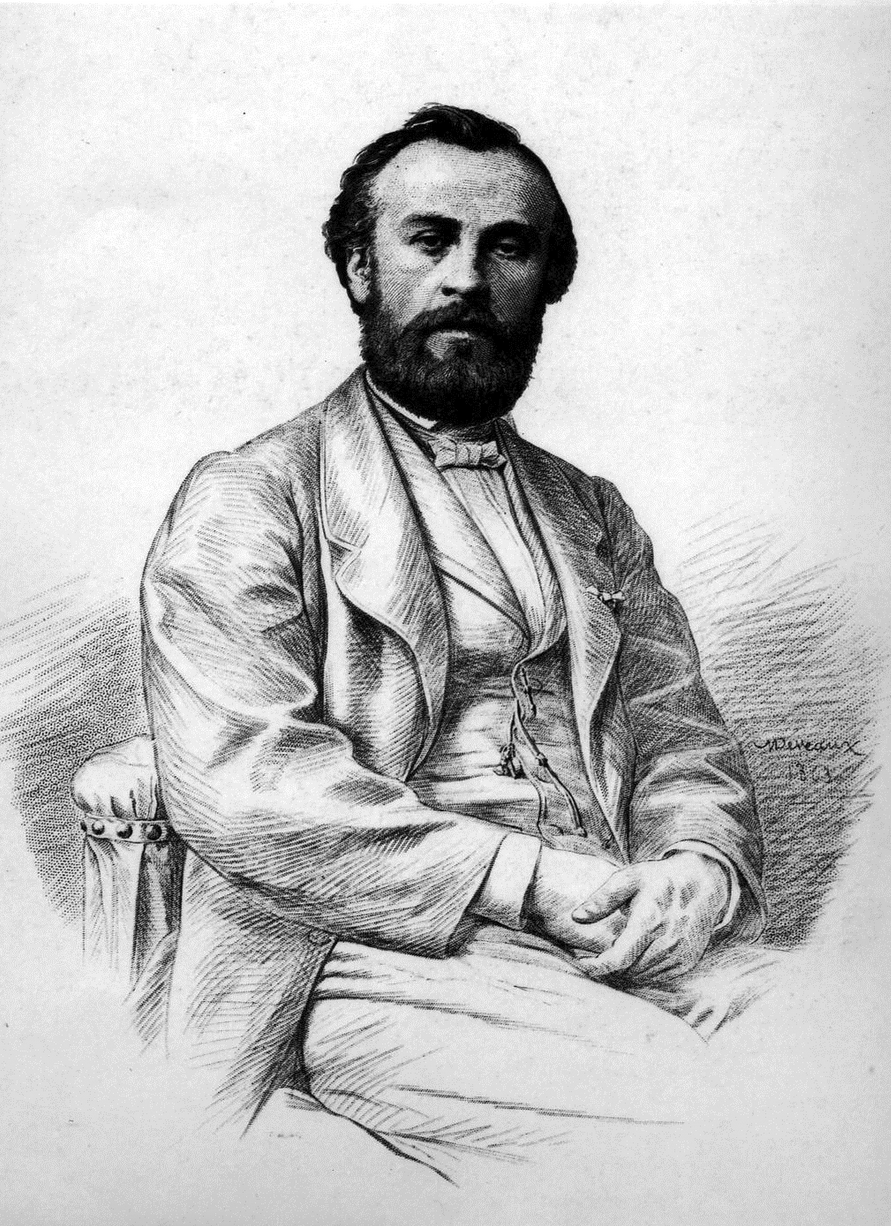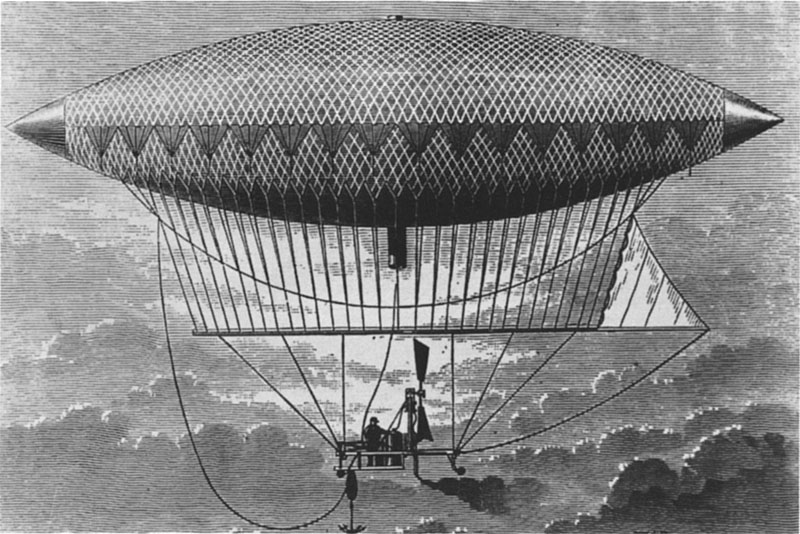
24 September 1852: French engineer Baptiste Henri Jacques Giffard (1825–1882 ) flew his hydrogen-filled dirigible, powered be a 3-horsepower steam engine, 17 miles (27 kilometers) from the Paris Hippodrome to Trappes in about three hours. During the flight he maneuvered the airship, demonstrating control.
The Giffard Dirigible (French: “directable”) consisted of an envelope 44.00 meters (144 feet, 4 inches) in length, 10 meters (32 feet, 10 inches) in diameter, and had a volume of 2,500 cubic meters (88,300 cubic feet). The envelope was filled with coal gas. A one-cylinder steam engine fueled with coke turned a 3.3-meter (10 feet, 10 inches) diameter, three-bladed pusher propeller mounted to the underslung gondola. The steam engine weighed just 250 pounds (113 kilograms), and with the boiler and fuel, came to 400 pounds (181 kilograms).

© 2016, Bryan R. Swopes
that really is quite incredible. This gentleman deserves more credit than he probably gets. Just think what he may have accomplished with an internal combustion engine. Wonder what he fires his engine with and required water storage.
Thanks for posting
Thanks, Donald. The engine was fueled with coke.
To Donald Little’s comment regarding Giffard deserving more credit…. Giffard also conceived and designed a device known as a “boiler feedwater injector”.
https://americanhistory.si.edu/collections/search/object/nmah_846123
Boilers that provide steam for either processing or to power an engine require the replenishment of water in order to maintain the proper level and safe operation. As noted in the article in the link, early low pressure boilers used force pumps to do so, however as steam engines evolved, higher boiler pressures needed a different method.
Giffard’s device used steam pressure from the boiler, that when introduced into the starting chamber created a slight vacuum that brought feedwater from a tank into contact with other nozzles that underwent a mass/velocity change, and thence beyond a check valve into the boiler……all with no moving parts……it’s almost black magic.
Over the next few decades other inventors came up with their own version, some were more complicated, some less, some more effective and some not, but it was Giffard that conceived of the idea. The devices were standard equipment on most boilers for the next hundred years.
Very interesting, Tom. Thank you!